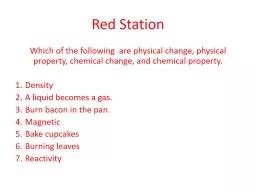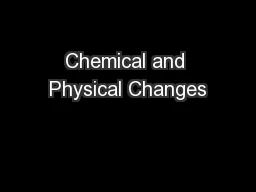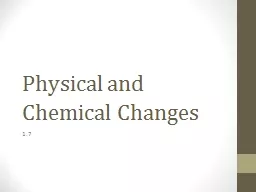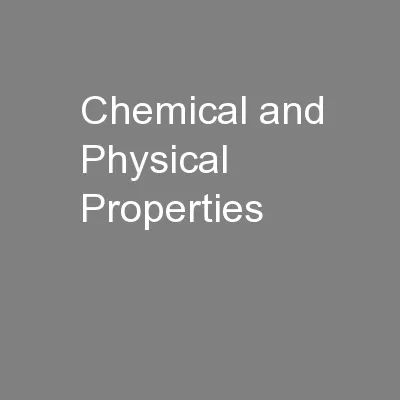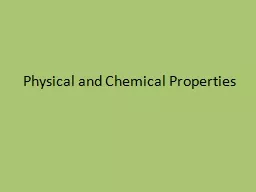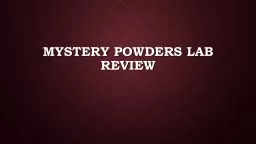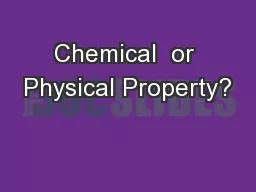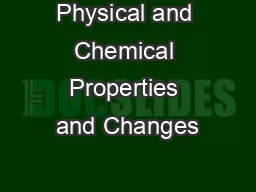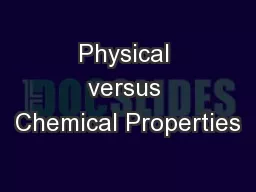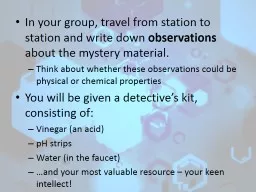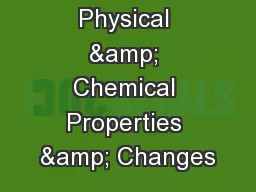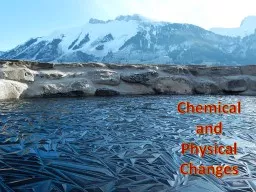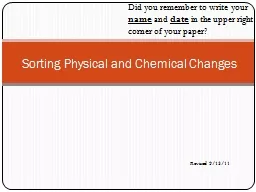PPT-Red Station Which of the following are physical change, physical property, chemical change,
Author : jane-oiler | Published Date : 2018-12-25
Density A liquid becomes a gas Burn bacon in the pan Magnetic Bake cupcakes Burning leaves Reactivity Blue Station Define the following terms Matter Physical
Presentation Embed Code
Download Presentation
Download Presentation The PPT/PDF document "Red Station Which of the following are ..." is the property of its rightful owner. Permission is granted to download and print the materials on this website for personal, non-commercial use only, and to display it on your personal computer provided you do not modify the materials and that you retain all copyright notices contained in the materials. By downloading content from our website, you accept the terms of this agreement.
Red Station Which of the following are physical change, physical property, chemical change,: Transcript
Download Rules Of Document
"Red Station Which of the following are physical change, physical property, chemical change,"The content belongs to its owner. You may download and print it for personal use, without modification, and keep all copyright notices. By downloading, you agree to these terms.
Related Documents

